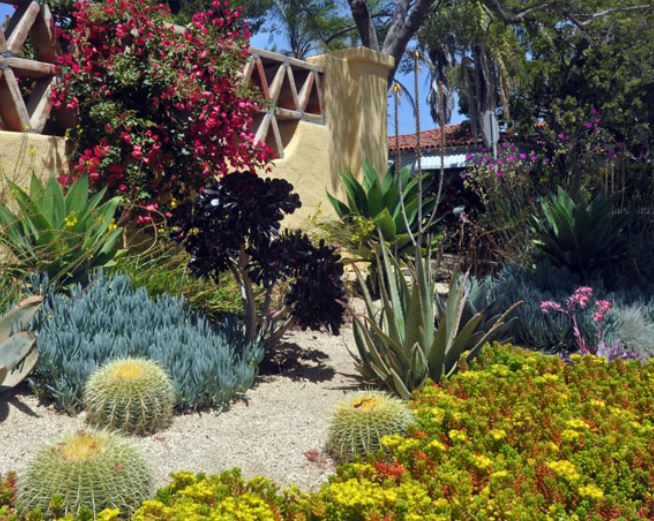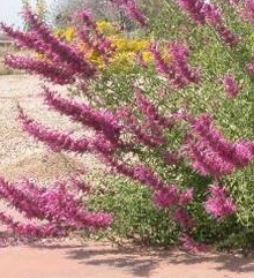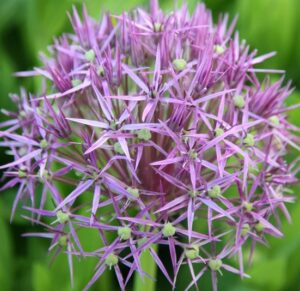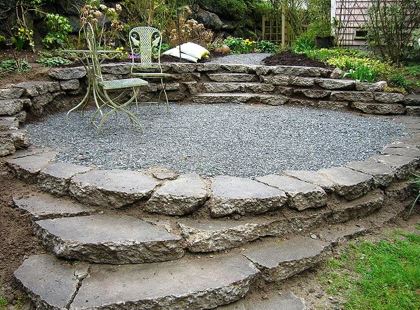In a nutshell, the definition of xeriscaping is landscaping for dry climates. Because dry climates receive very little water compared to tropical or temperate rainforest type environments, they must design the landscape in a way that is both aesthetically pleasing and maintainable.
The phrase was coined in the early 1980s during a conference in Denver, Colorado. Ever since the idea came to life, many jurisdictions in the United States such as Arizona, Nevada, New Mexico, and California adopted the philosophy.
Quite often xeriscaping is undermined because many assume that it simply means piles of sand, gravel, rocks, and a cactus or two. However, the concept of xeriscaping extends well beyond that. Another misconception is that only native plants can be used in a xeriscape setting, but the truth is that foreign plants can be imported (with diligent research beforehand) and provide beneficial results.
The 7 Principles of Xeriscaping
Xeriscape Colorado has set out seven fundamental principles of xeriscaping that define what the concept is all about. It is the best source for helping us determine what the true meaning of xeriscaping is.
1. Planning and design
This step is to plan for water conservation and beauty of the landscape. It includes taking into consideration various things such as climate, sloping land, irrigation systems, soil types, and shading.
2. Improving the soil
The utilization of compost or manure is given preference. Grading the soil is also important to avoid water loss via run-off.
3. Effective Irrigation
Plants still need water to survive – it’s just a matter of how much and when. It’s also vital to group the same type of plants with similar water needs in a close quarter zone. Drip irrigation systems should also be taken into consideration.
4. Manageable turf sizes
Turfgrass is labor intensive to maintain and consumes a lot of water. Lawns are best positioned in areas that have flat land, with at least a half foot of soil and plenty of drainage/ organic matter. Access to the sun is also significant for turf lawns. The grass is also susceptible to tree-root competition and can be quickly overrun with weeds if not taken care of properly.
5. Selecting the right plants
Every plant has its growing requirements. To xeriscape effectively, you need to find plants that have a low water consumption ratio and can survive in drought climate.
6. Mulching
Mulching if the formation of a protective blanket over the soil. It has many benefits that eliminate and minimizes weed growth, prevents hard crust formation, and conserves soil moisture. Wood chip mulch is a common type of mulch used and tends to create an aesthetic profile among the landscape.
7. Correct maintenance
Maintenance involves mowing, weeding, pruning, and fertilizing. These activities when performed regularly and correctly will provide enormous benefits to keeping the landscape intact for years and decades to come.
Best Plants for Xeriscaping
Here is a list of plants that are ideal for Xeriscaping. They are intended to survive in drought and low water availability areas.
Douglas Maple
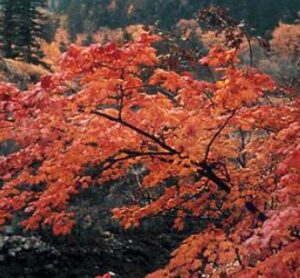
Gold Plate Yarrow
This is a yellow-topped perennial plant that can grow up to 5 feet tall. The domed flower heads produce tiny bright golden flowers atop green foliage. It has low maintenance and low water needs. It can grow in both acid, alkaline, and neutral soils. The gold plate yarrow attracts butterflies for a vibrant garden atmosphere.
Terra Cotta Yarrow
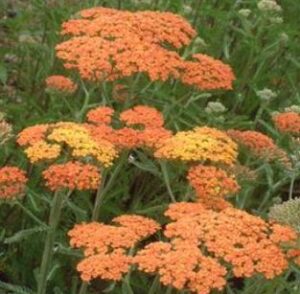
Double Bubble Mint
This perennial has a unique name for its unique colors. It blooms during early summer throughout the frost season. It has moderate water requirements and can grow in a full-sun-exposure environment. It grows up to 3 feet in height and 18 inches in depth. The flower color is rosy pink whereas the foliage is greyish green.
Star of Persia
This plant is a bulb that has a very general appearance that looks like something out of an art gallery. It has umbels that are about 11 inches in diameter. They thrive in hot, dry conditions because soil-borne fungi can infest the plant in damp areas. Their genus is allium, and the height of the plant is about 2 feet tall. Flower color is purple/pink.
Turkestan Onion
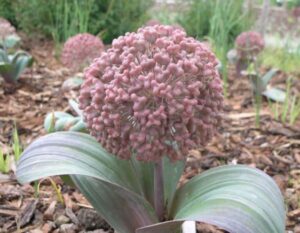
Pot marigold
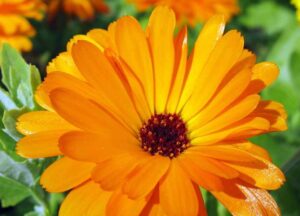
Trumpet Vine
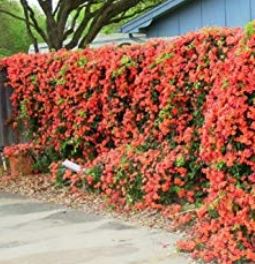
Celosia
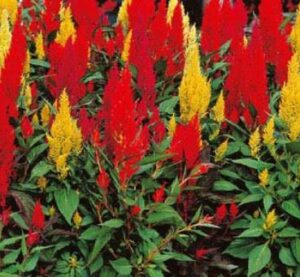
Butterfly Weed
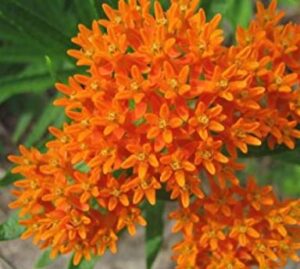
Blanc de Coubert Rose
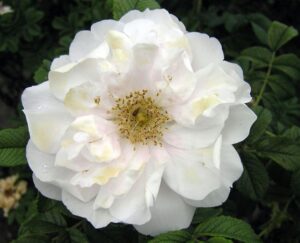
Black Currant
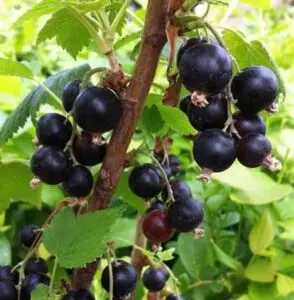
How to Xeriscape
Learning to xeriscape is about planning, design, and execution. You must take into careful consideration the timing of how each of the plants will grow and what their fertilizing, soil and other needs will be. Shade and coverage should be a top priority in a dry atmosphere whereas you will need to consider enough walking room for areas that will have high pedestrian traffic. A simple design may suit you better if you are a beginner and will save resources which will ultimately benefit the environment and your wallet.
When considering the soil, you should ensure that it can absorb at least a half inch of water per hour. If the ground is too dry and hard-packed, it will not be able to absorb enough water to sustain the root systems. However, if you overload the soil with sand, then you will have a high-water consumption ratio. You can find ways to test the nutrient and organic matter content in the soil before planting. The results will help you figure out what approach to take. There are also horticulturists around the area in which you live that should be able to assist you with your planting needs.
Composting is a great way to add rich organic material and nutrients to the soil while providing a mulching effect. Compost will also prevent plant diseases and harmful pest infestation.
When adding amending substances, you should use a tiller with tines that reach at least a half foot down into the ground. Using a tiller to blend the soil is a great way to invite new plantations.
Furthermore, irrigation can be as complicated as a moisture sensor with automatic timing and micro emitters or as simple as a drip hose with a valve handle.
You should focus on the one-time cost of the irrigation technology and then calculate how much water it will use over a lifetime. Also, decide how much time and resources will be attributed to maintaining the xeriscape and incorporate that into your decision for irrigation. For instance, if there will not be much help from a labor perspective in maintaining the xeriscape, then you may want to opt for a more automatic irrigation system as opposed to relying on manual intervention.
Water is indeed a renewable resource because it falls from the sky in the form of rain and snow and cycles its way back to the sky through evaporation and other processes. However, if humans consume water at a quicker rate than it can renew itself, it leads to a water supply shortage. As a result, when xeriscaping, you should group the types of plants you intend on planting into hydrozones. Hydrozones are areas or groups of plants that have similar watering needs. This will ensure that the competition for water is minimized amongst the plants. Furthermore, long skinny lawns are great because they give you enough room to play frisbee or soccer while eliminating excess turf you would get with more width.
If you happen to have enough compost, you should use it to fertilize the soil as opposed to buying manufactured bags of fertilizer at the store.
It’s hard to recreate forest-like conditions in your backyard because there is a lack of equipoise. However, you can still prevent your vegetation from garnering diseases.
How to Reduce Resource Use When Xeriscaping
Some associations and organizations have estimated on a consensus that closes to half of the average household’s water consumption is attributed to lawn upkeep and maintenance. In areas such as Las Vegas, Nevada this problem is concerning because the Hoover Dam in Lake Mead has been dropping consistently over the past decades and is close to 80 feet below normal levels.
In many ways, xeriscaping is the use of human intellect to intervene and allow vegetation that is naturally adapted to surviving in a desert climate to thrive. Homeowners can opt for xeriscapes instead of lush, water consuming landscapes while creating a visual profile while increasing the values of their houses by up to 15 percent.
There are also many materials you can use that have been recycled and refurbished. This may mean looking at your backyard to start. For instance, you may have trees that could be harvested for its lumber content or an old patio that could be transformed into stepping stones. Broken concrete that has been recycled is called urbanite which is essentially a brand-new mineral. Look at some the images that use broken concrete to design the landscape. If you happen to have access to a concrete saw, then you may be able to make some finishing touches upon it.
Logs are great for landscaping because they provide a nice visual appeal and may even provide room for sitting down. You can find these at a lumber mill nearby and be sure to ask permission first.
Wood chips are also reusable material that can be found in recycling or waste-stream facilities nearby. Wood chips are great for adding a thick and rich mulch onto a plant bed. They are sometimes free or available at a very low cost.
Moreover, if you need to use original material opt for those that are sustainably sourced. For example, consider straw bale or earthen construction as opposed to lumber. You can even resort to growing your bamboo if you’re creative. If you must use paint, use low or zero VOC ones that have the Green Seal Certification.
Another way is to rely on heritage materials. This includes interlocking concrete paver blocking that is now being used in the mainstream industry to build driveways. Sustainability is defined as creating things that last and then making them modular so that future generations can use them again or repurpose them. This makes materials such as bricks, segmental retaining walls stones, and paving blocks spread over decades of use.
You should stay away from artificial plastic lawns that have recently passed as a green material. These have been incentivized in some communities because they are low-water consumption, but they provide a host of other side effects that outweigh its benefit if any. For example, stormwater does not have any way of biofiltering pollution. The heat-island effects that come from fake lawns end up costing more in fossil fuel use and many cases, the release of toxic gases.
According to the EPA, Americans consume over 800 million gallons of gasoline each year through their lawn mowers. That is a lot of gasoline spent on maintaining vegetation! Consider the switch to an electric lawn mower. However, you may be fooling yourself into thinking that lawn mowers are the only consumer of fossil fuels in your garden. Consider these fossil fuels when xeriscaping:
- Transporting materials such as fertilizer, concrete, mulch, etc. to and from the plantation
- Transporting workers and tools
- Using fertilizers that contain chemicals
- Using too many pesticides
- The fossil fuels it takes to process waste including landfill management and green-waste facilitation
- The plastic used in the irrigation pipes, garden hose, plant containers, and structures
As you can see xeriscaping is about awareness of where and how each material is coming from and where it is going to. If you think sustainably or at least try to, you begin to see the bigger picture.
Conclusion
The true meaning of xeriscaping is much more than zero waste or sustainable landscaping. It is about planning, awareness, design, sustainability and more. Xeriscaping is both an art and a science, and you must consider many things when performing this activity. For instance, the colors of the flowering plants should contrast each other. Furthermore, there should be a balance between plants that give shade and those that don’t. Techniques such as repetition of design elements, scaling, shape, focal points, and texture all play into the process of xeriscaping from the planning phase right to execution. The lushest of landscapes may fail to be green meet xeriscape standards. Xeriscapes are not only sustainable but self-sustainable meaning they can thrive with little upkeep. After all, does using tons of chemicals and water sound green to you? Practical and functional landscapes are the aim of xeriscaping, and this write-up should have given you the introduction you needed to get started.

